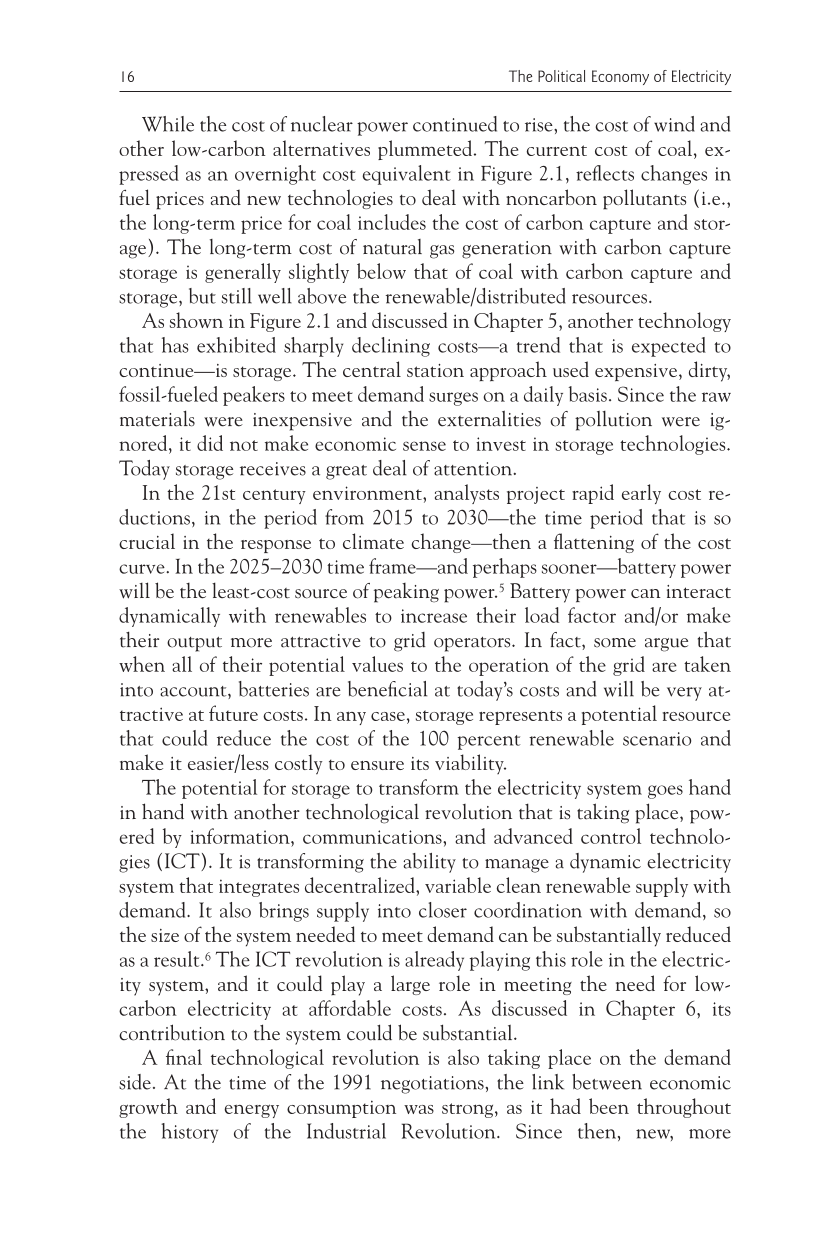16 The Political Economy of Electricity
While the cost of nuclear power continued to rise, the cost of wind and
other low-carbon alternatives plummeted. The current cost of coal, ex-
pressed as an overnight cost equivalent in Figure 2.1, reflects changes in
fuel prices and new technologies to deal with noncarbon pollutants (i.e.,
the long-term price for coal includes the cost of carbon capture and stor-
age). The long-term cost of natural gas generation with carbon capture
storage is generally slightly below that of coal with carbon capture and
storage, but still well above the renewable/distributed resources.
As shown in Figure 2.1 and discussed in Chapter 5, another technology
that has exhibited sharply declining costs—a trend that is expected to
continue—is storage. The central station approach used expensive, dirty,
fossil-fueled peakers to meet demand surges on a daily basis. Since the raw
materials were inexpensive and the externalities of pollution were ig-
nored, it did not make economic sense to invest in storage technologies.
Today storage receives a great deal of attention.
In the 21st century environment, analysts project rapid early cost re-
ductions, in the period from 2015 to 2030—the time period that is so
crucial in the response to climate change—then a flattening of the cost
curve. In the 2025–2030 time frame—and perhaps sooner—battery power
will be the least-cost source of peaking power.5 Battery power can interact
dynamically with renewables to increase their load factor and/or make
their output more attractive to grid operators. In fact, some argue that
when all of their potential values to the operation of the grid are taken
into account, batteries are beneficial at today’s costs and will be very at-
tractive at future costs. In any case, storage represents a potential resource
that could reduce the cost of the 100 percent renewable scenario and
make it easier/less costly to ensure its viability.
The potential for storage to transform the electricity system goes hand
in hand with another technological revolution that is taking place, pow-
ered by information, communications, and advanced control technolo-
gies (ICT). It is transforming the ability to manage a dynamic electricity
system that integrates decentralized, variable clean renewable supply with
demand. It also brings supply into closer coordination with demand, so
the size of the system needed to meet demand can be substantially reduced
as a result.6 The ICT revolution is already playing this role in the electric-
ity system, and it could play a large role in meeting the need for low-
carbon electricity at affordable costs. As discussed in Chapter 6, its
contribution to the system could be substantial.
A final technological revolution is also taking place on the demand
side. At the time of the 1991 negotiations, the link between economic
growth and energy consumption was strong, as it had been throughout
the history of the Industrial Revolution. Since then, new, more




















































































































































































































































































































































































































































































